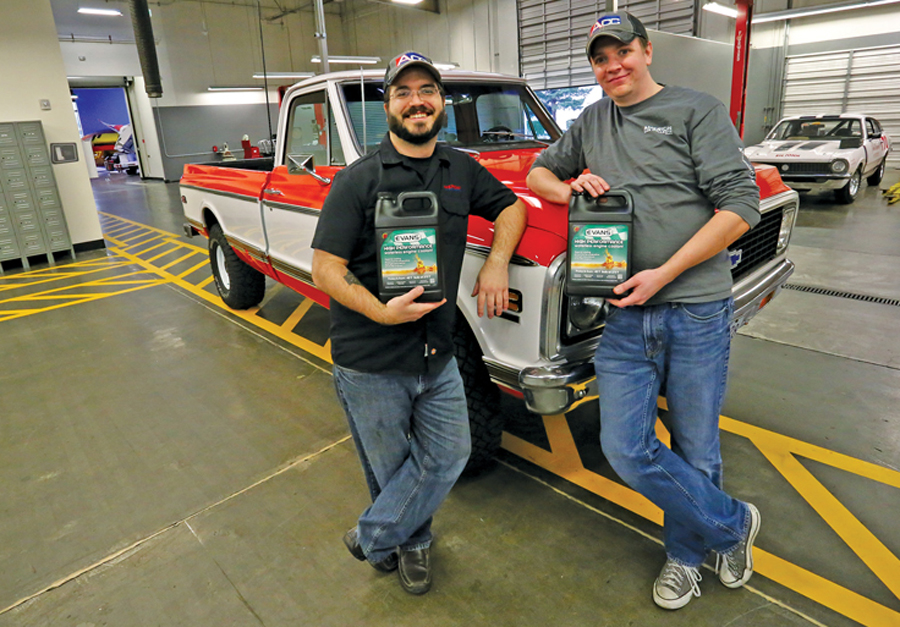
Water-based coolants have been the standard since the beginning of the car industry. But those traditional coolants have limitations that car people have simply learned to accept. Coolant turns acidic over time, so we swap it often to eliminate electrolysis from eating our engine’s metals from the inside out. We replace plugged heater cores and radiators, full of scale and other deposits left by water. And we still deal with boil-overs on hot days and the high pressure needed to boost water’s boiling point, which can blow hoses and gaskets.
Evans Waterless Coolant eliminates all of these problems by completely eliminating water from the equation. EWC has a higher boiling point than water by more than 100 degrees, so there’s no need for high pressure in the system to keep temps in check and no risk of boil-overs. It significantly reduces oxidation and electrolysis, and does not build up scale inside heater cores and radiators. Best of all, it is a one-time swap that’ll last as long as you own your car.
The only maintenance? Check your water content once a year. At about $340 total (including three gallons of coolant, Prep, and tools/equipment), this isn’t cheap, but considering the time, effort and expense you’ll save by not needing to swap coolant, rod out radiators, or deal with boil-overs anymore, it’s money well spent. Learn more at www.evanscooling.com.
Swapping over is simple, but there are some important steps to follow. We took my ’72 Chevy K10 to World of Speed’s shop in Wilsonville, OR, to show you how to do it.
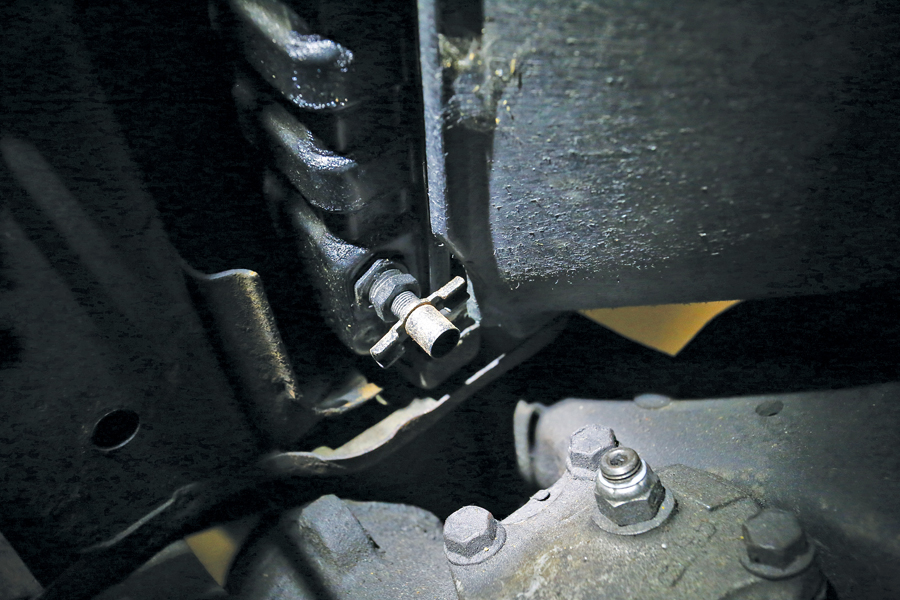
Start with a cool engine. Disconnect the negative battery terminal and locate the radiator drain petcock, which in this case is on the driver’s side of the radiator, pointed right at the steering box. Thanks, GM! 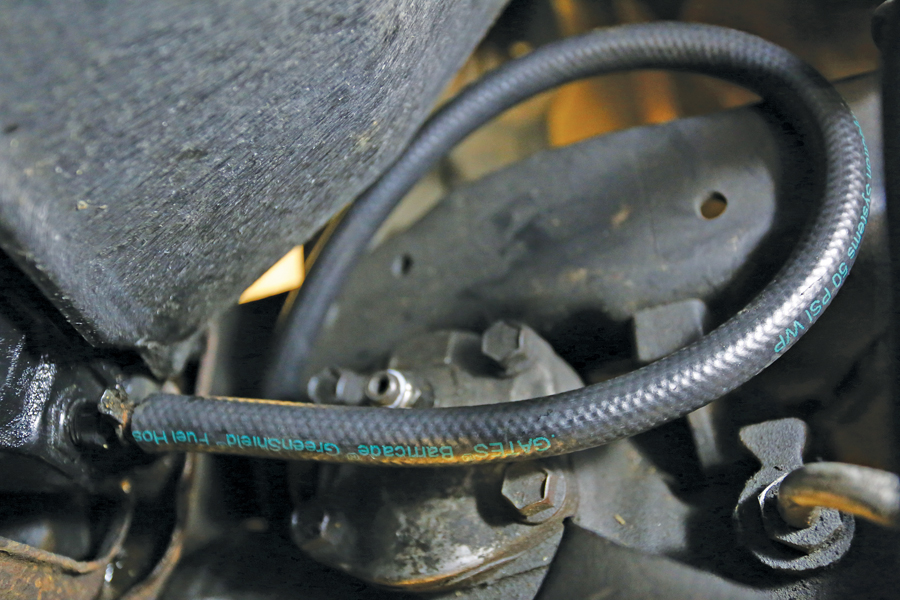
Key to this process is removing as much of the old coolant from the system as possible. Open the radiator cap and the petcock to allow coolant to drain out. To limit the mess that coolant raining on the steering box will cause, stick a two-foot length of 3/8-inch fuel line on the end of the petcock and put the other end into a large bucket. Let it run until it stops. 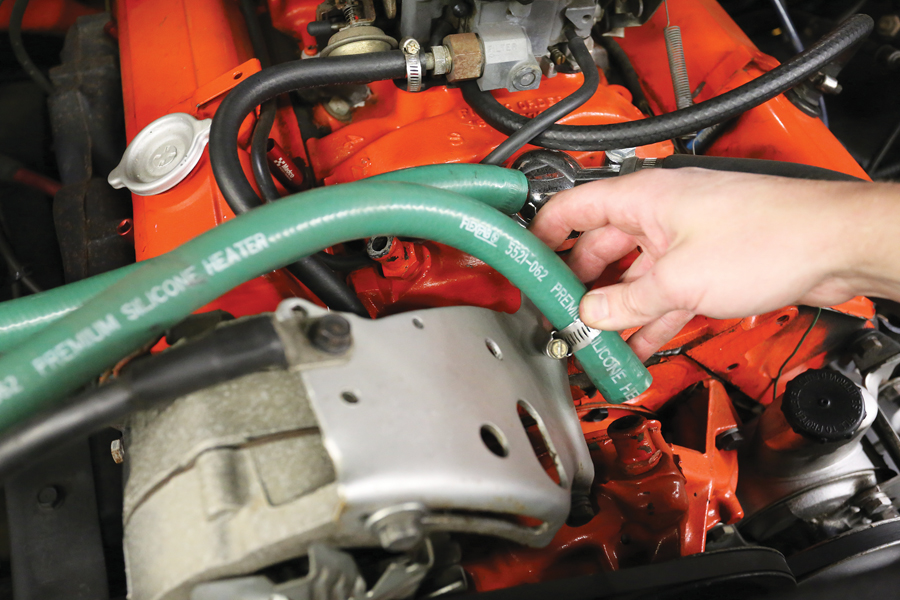
Next task: Remove any residual coolant from the heater core if accessible. Locate the feed and return heater core hoses and disconnect them both from the engine. Stick one in an empty catch container, and if you have an in-line valve anywhere in either line, be sure it’s open. 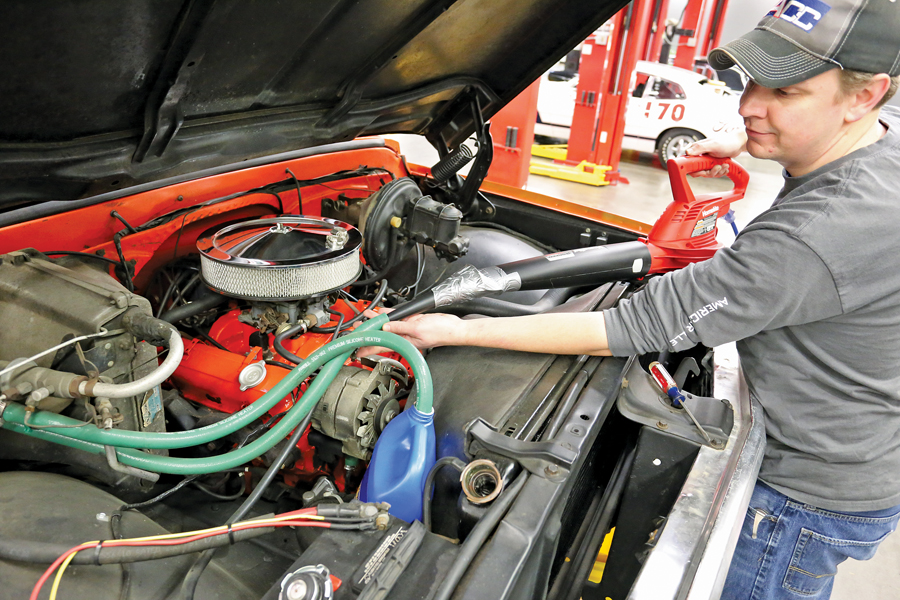
Evans recommends high-volume air for this job, such as a leaf blower. Compressed air can also be used, but it isn’t as effective and can cause damage if you’re not careful. Blow any remaining coolant out into the container. 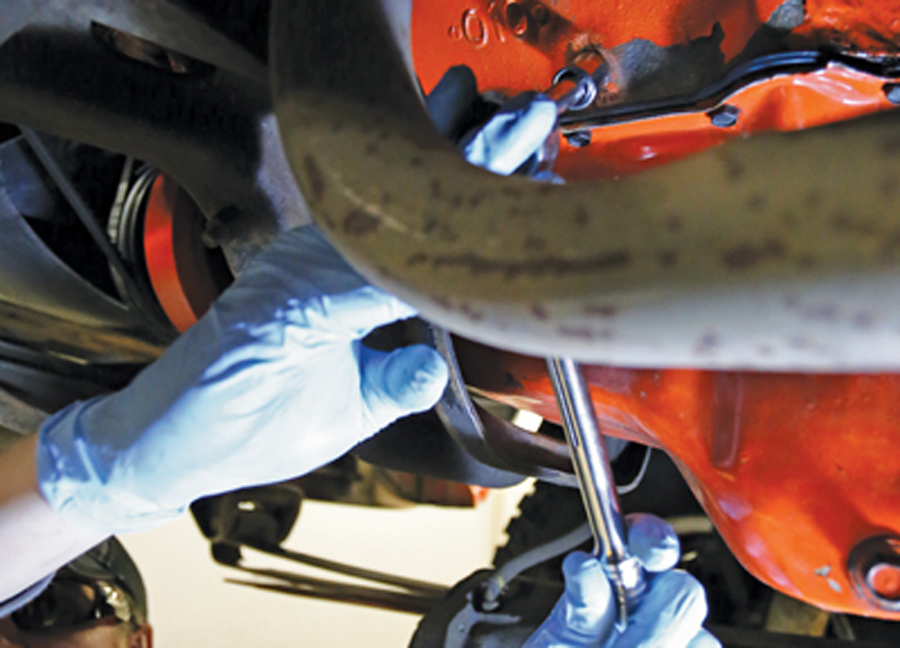
A small-block Chevy has two water-jacket drains — one on each side of the engine just above the oil pan — stopped up with threaded brass plugs. If you can get to them, use a six-point 9/16-inch socket and a ratchet and loosen both to hand-tight, but don’t remove them yet. (If you can’t get to the drains or can’t get them out of the block, don’t worry — we’ll get to that in a second.) 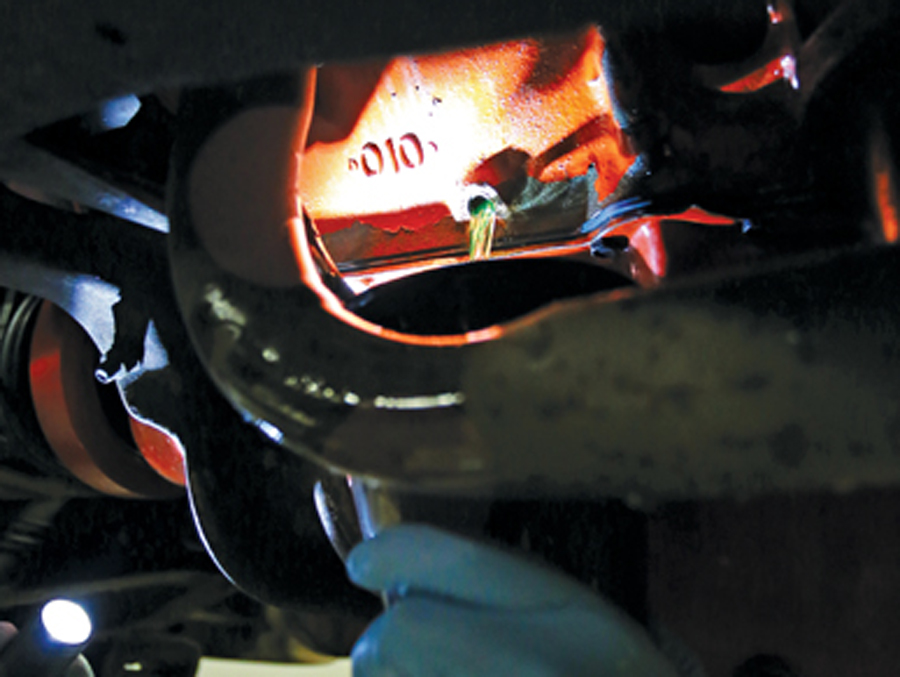
Block drains can make a pretty big coolant mess all over you and your floor. We used a transmission funnel and a length of heater hose to direct the engine block’s coolant into an old gas can. Drain both sides. 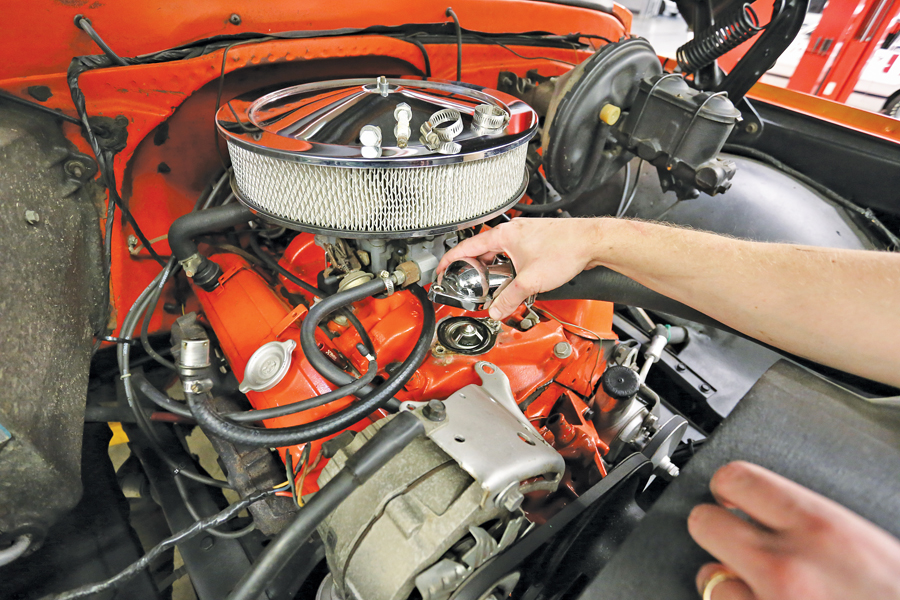
With the block drains still removed, pull the thermostat housing and thermostat from the top of the engine. 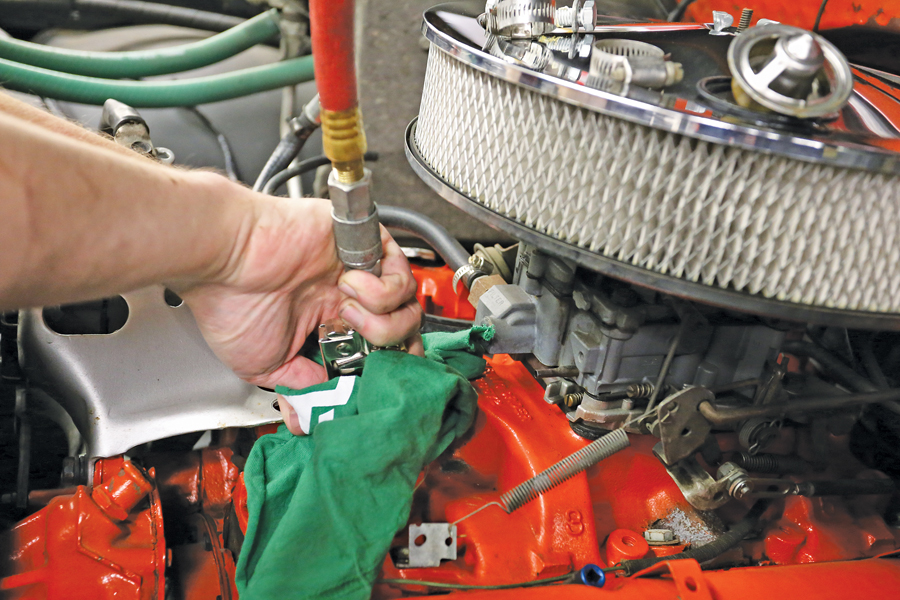
Blow through the block, pushing any remaining water and coolant out of the block drains. If you can’t get to the drains or there aren’t any, pull the lower radiator hose and place a bucket under it to catch what’s in the block. We used high-pressure compressed air, an air nozzle, and a rag. When the block is dry, reinstall the thermostat and housing. 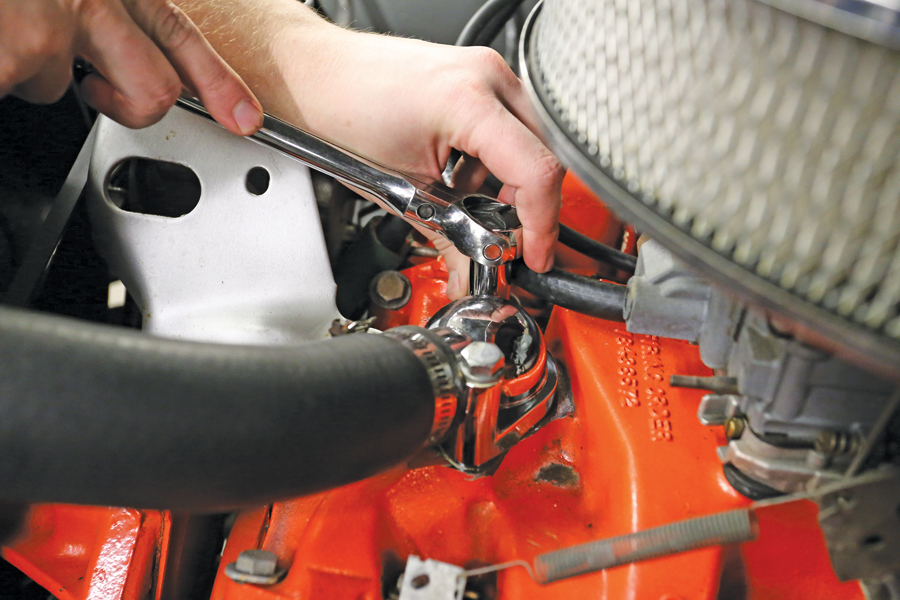
Reinstall the thermostat and housing, the heater core hoses, the block drains and the lower hose (if applicable), and close the radiator petcock. 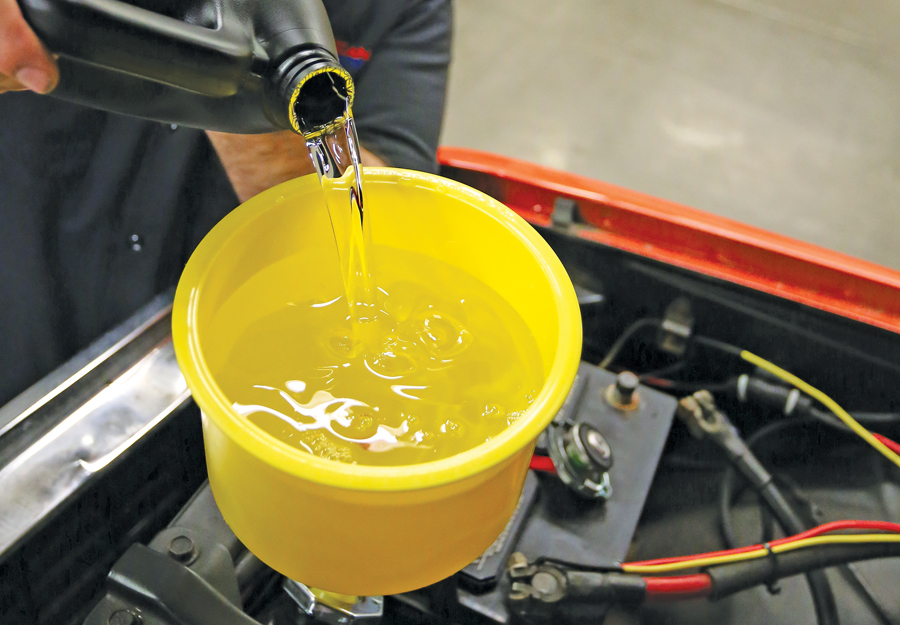
Evans Prep Fluid is specifically designed to pull any remaining moisture from your cooling system. Fill the radiator with Prep, check for leaks, hook up the battery and start the engine. We used Lisle’s Spill Free Coolant Funnel (Summit Racing p/n LIL-24680, $27.97) to burp air out of the system. 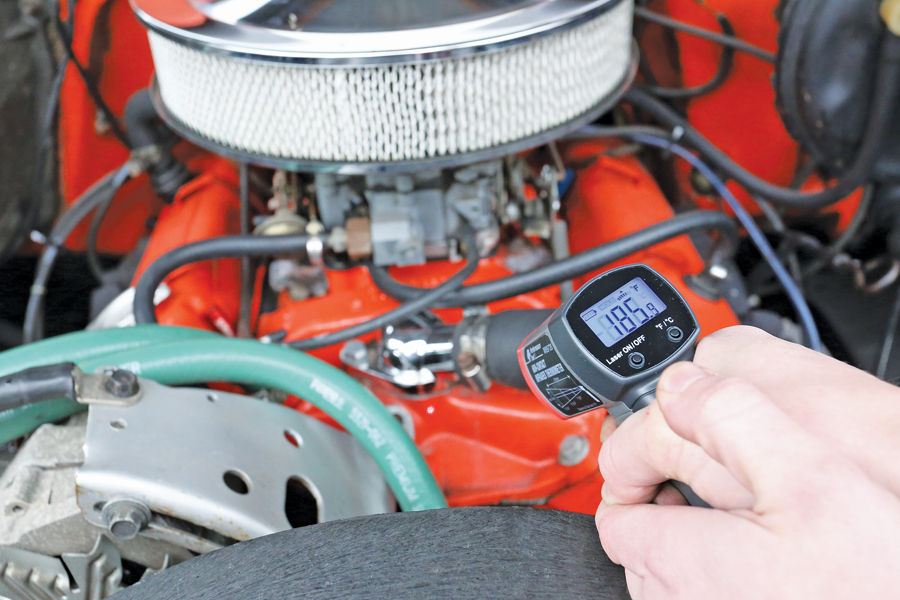
For the Prep Fluid to do its job, it must circulate through the entire cooling system — so you need to get the engine to operating temp, with the thermostat open and the heater running. We used a mini laser pyrometer (Summit Racing p/n G1054, $53.97) — a hands-free gauge — to verify the truck’s thermostat had opened and that all heater hoses were hot. Run for 10 minutes beyond that point, then allow the system to cool. 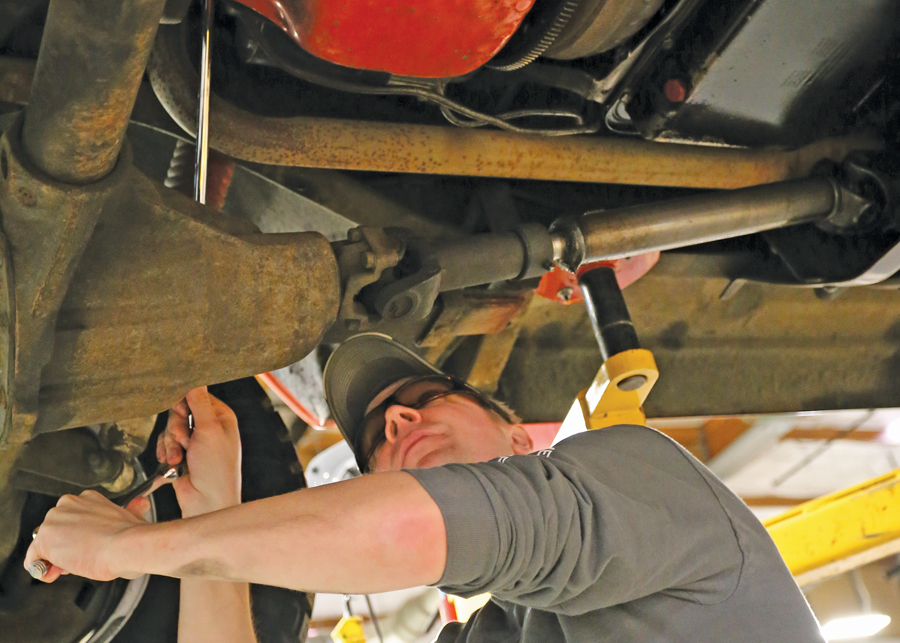
Drain the radiator and the block again, using the petcock and block drains. Save the Prep Fluid, as it’s reusable up to three times — but be sure to keep it in a closed container, as it will pull moisture from the air if left out. If you don’t get all the Prep out of the system, don’t sweat it — it’s also waterless and compatible with Evans Waterless Coolant. 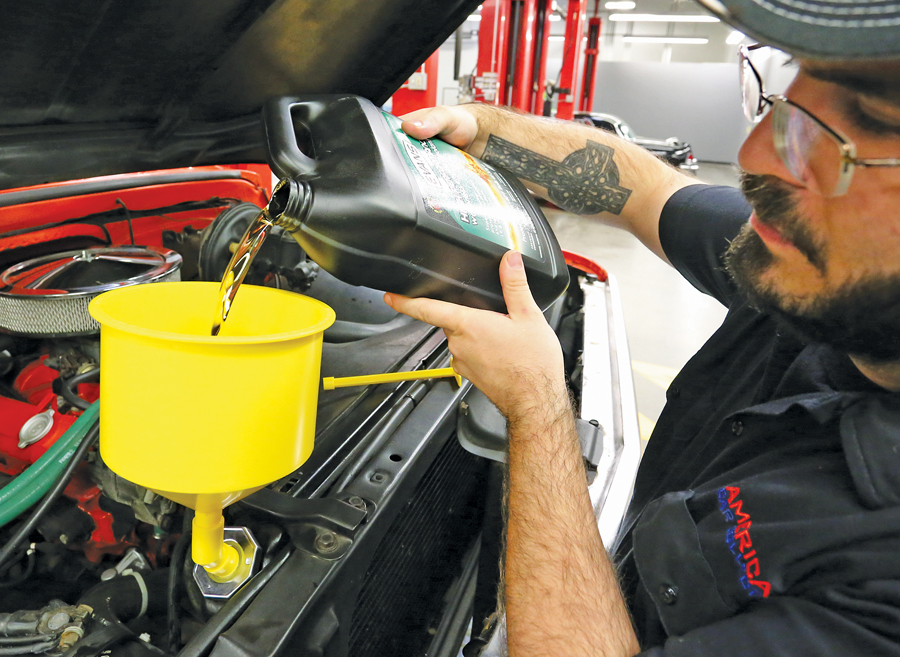
Close up your block drains and petcock, and fill the engine with Evans Waterless Coolant. Burp the system, close up the radiator cap, and run for ten minutes after it hits operating temperature. Let it cool. 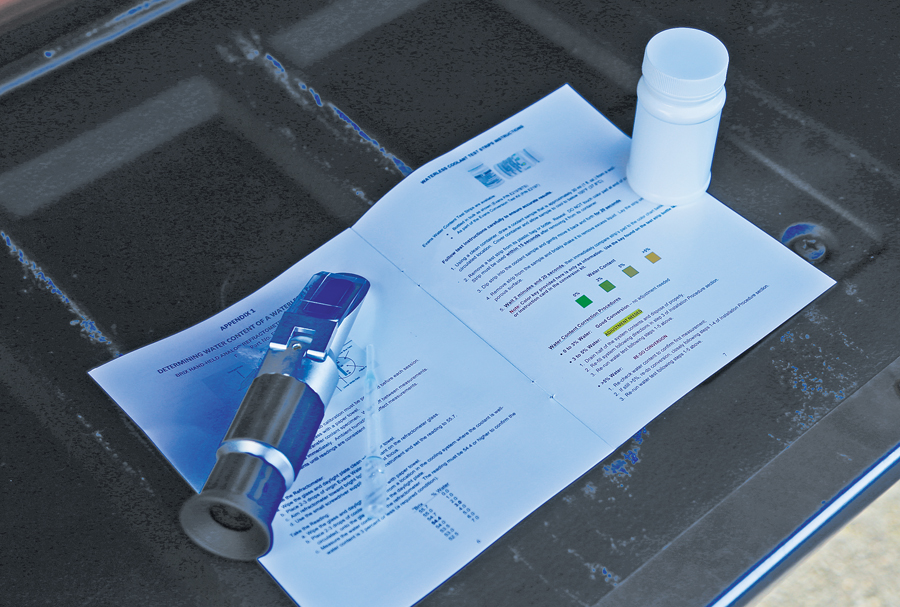
Testing water content is critical — you need less than 3% water for a successful conversion. Evans uses two different methods: a refractometer that uses a Brix scale to measure moisture, and small test strips that come inside the Conversion Kit. 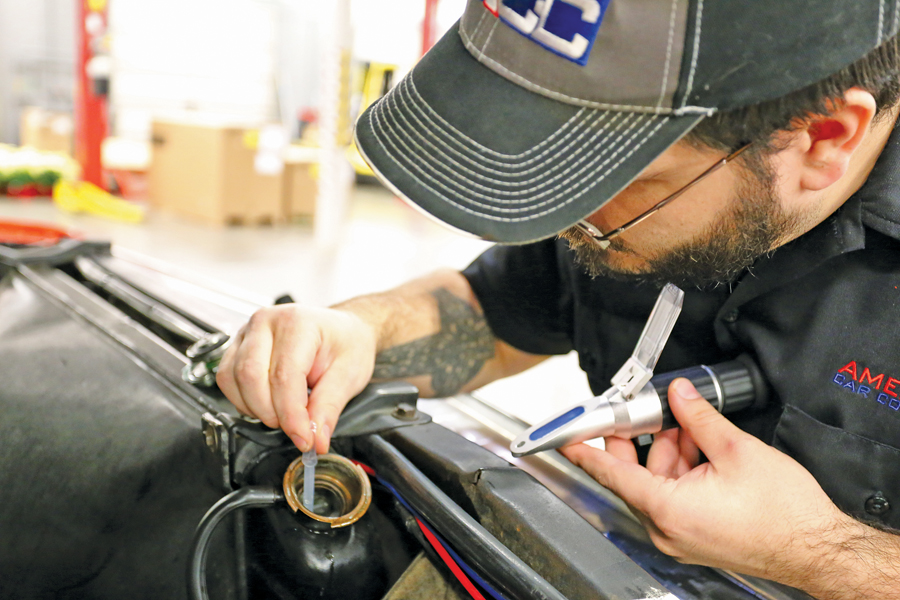
To use the refractometer, first calibrate it using fresh Evans coolant. Place two to three drops on the glass, aim it toward a light source, and set the reading to 57.0 using a small screwdriver. Clean it off, place two to three drops of coolant from your radiator on the glass, and view the results. A reading of 55.7 equates to 3% water. Higher numbers mean lower water content. 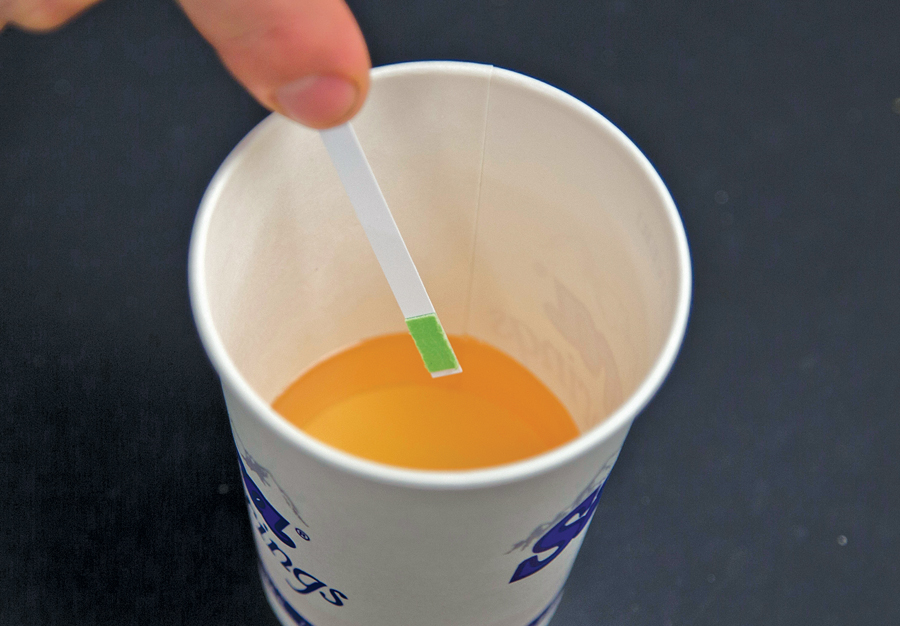
To use Evans test strips, first draw an ounce of coolant from your radiator into a clean container and allow it to cool below 100 degrees. Pull a test strip out of the container and place it in your coolant sample. Move it around for 20 seconds. Then remove the strip and let it sit for two minutes and 20 seconds. 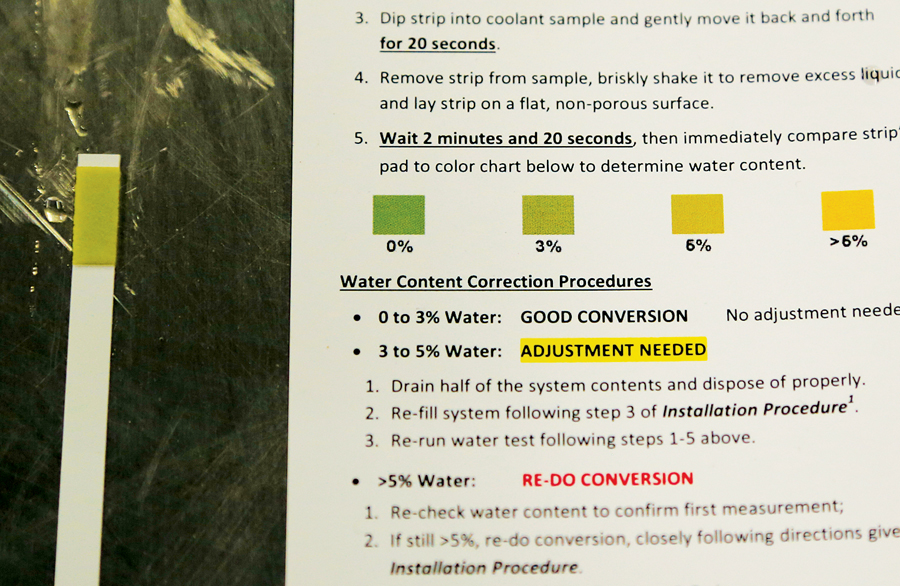
Compare the color of the test strip with the supplied chart. If you’re green, you’re good — that’s 0%–3% water. If you’re at 5% or more, corrective action needs to be taken — starting with a drain and fill of the radiator with fresh Evans coolant, which will lower the percentage of water. We fell right at 3%. 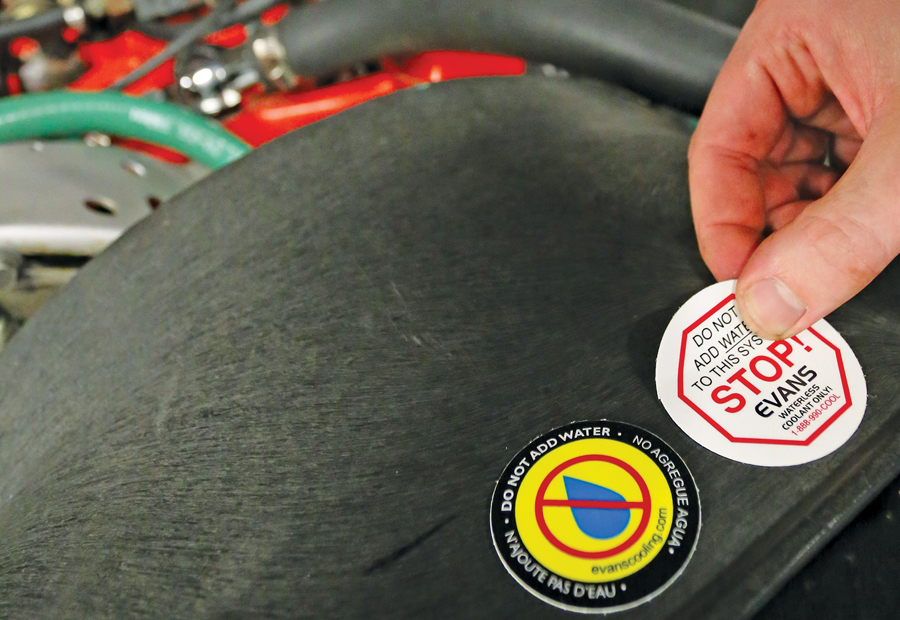
Finally, place the supplied stickers on or near your radiator to ensure nobody ever adds water to your radiator. Your system is now good to minus 40 degrees and has a 375-degree boiling point, and it’ll stay that way as long as you own the car.